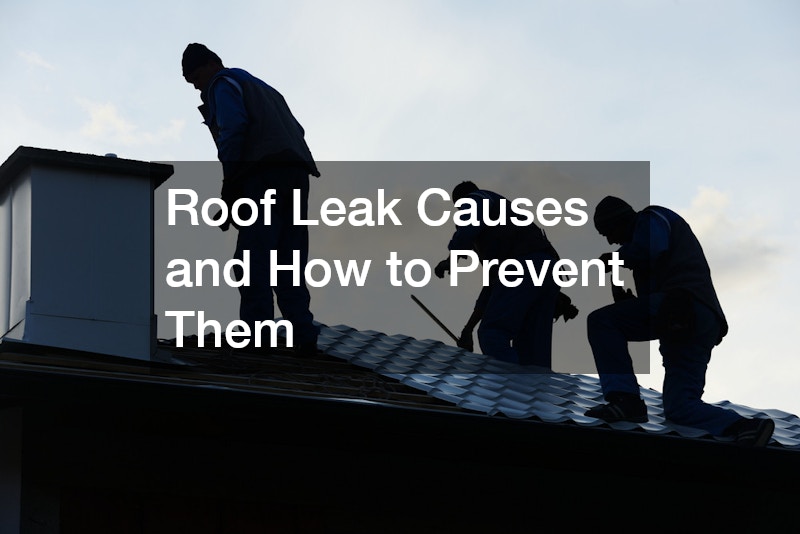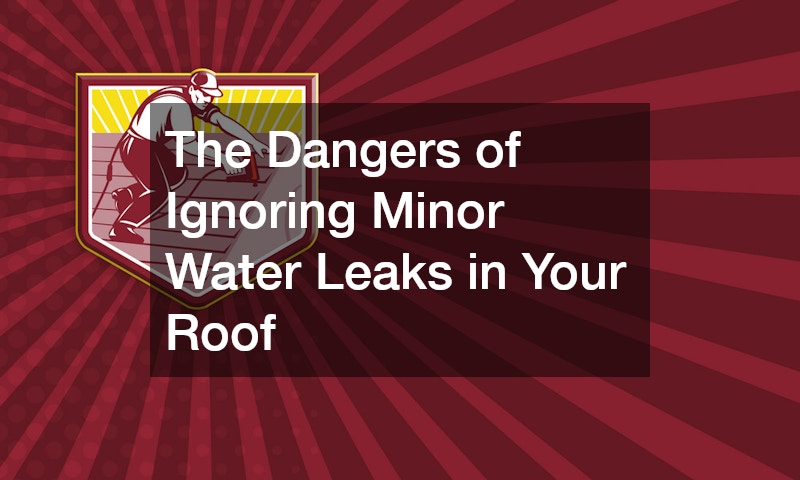Roof leaks are a common issue that homeowners face, leading to costly repairs and potential damage to the home’s interior and structure. Understanding the various roof leak causes can help in taking proactive measures to mitigate these problems before they escalate. Whether you’re dealing with weather conditions, aging materials, or poor installation, knowing what to look for and when to call professional services can make a significant difference. This comprehensive guide will delve into the different aspects of roof leakage, from common causes and weather impacts to maintenance tips and knowing when to seek professional help. We will explore the role of local roofers, the best roofing practices, and how regular maintenance and timely repairs can ensure the longevity and integrity of your roof. By the end of this article, you’ll have a deeper understanding of roof leak causes and how to address them effectively.
Understanding Common Roof Leak Causes

Roof leaks can stem from various sources, each presenting unique challenges and requiring specific solutions. One common cause is compromised shingles, which may become damaged due to severe weather, age, or improper installation. When shingles are missing or broken, water can penetrate the underlying materials, leading to leaks inside the home. Another frequent culprit is poor flashing, especially around chimneys, vents, and skylights. Flashing is designed to create a watertight barrier in these vulnerable areas, and when it fails, leaks are inevitable. Additionally, cracked or improperly sealed vent boots can be a significant source of roof leaks. Vent boots seal the area where pipes emerge from the roof and, over time, they can crack or wear out, allowing water to seep through.
The best roofing practices emphasize regular inspections and maintenance to catch these issues early. Local roofers often recommend scheduling inspections at least once a year and after major storms. They can identify problem areas before they become severe, offering solutions such as replacing damaged shingles or resealing flashing. These preventative measures can save homeowners from more extensive and expensive repairs down the line. Understanding these common roof leak causes is the first step in maintaining a solid and reliable roof over your head.
In addition to structural components, the type of roofing material used can also influence the likelihood of leaks. Materials like asphalt shingles, metal roofing, and tiles each have their own typical issues and maintenance requirements. Local roofing contractors are well-versed in the specific challenges associated with different materials and can provide tailored advice and services. For example, metal roofs can develop rust spots, while roof tiles may crack. Knowing these specifics can help homeowners make informed decisions about their roofing needs.
Impact of Weather Conditions on Roof Integrity
Weather conditions play a crucial role in the integrity of a roof and are among the leading roof leak causes. Heavy rainstorms can test the durability of a roof, especially if the roofing materials or sealing around components are already compromised. Torrential rains can expose weak spots, leading to leaks that can cause significant water damage to the interior of the home. Therefore, homeowners must ensure their roofs are in optimal condition before the rainy season to prevent such issues.
Snow and ice are other weather-related factors that can lead to roof leaks. Snow accumulation can put a substantial amount of weight on the roof, and when it melts, the water needs a clear path to the gutters. If the gutters are clogged, the water can pool and seep into the roof structure. Furthermore, ice dams, which form when melted snow refreezes at the roof’s edge, can trap water under shingles, leading to leaks. Local roofers understand these scenarios well and can offer solutions such as improved insulation and ventilation to prevent ice dam formation.
Extreme temperatures, both hot and cold, can also impact roofing materials. Prolonged exposure to high heat can cause materials like asphalt shingles to crack or curl, creating openings for water to enter. Conversely, freezing temperatures can make materials brittle and more prone to damage. Local roofing contractors often recommend using materials specifically suited for the local climate to enhance the roof’s longevity. In regions with harsh weather, opting for the best roofing materials and practices is key to maintaining a leak-free roof.
The Role of Roof Age in Leak Risk

The age of a roof is a significant factor in its susceptibility to leaks. Over time, all roofing materials deteriorate, making older roofs more prone to leaks. As a roof ages, the materials used in its construction, such as shingles, flashing, and seals, can wear out, break down, or become less effective. This gradual deterioration makes it easier for water to find its way through the roof and into the home. Regular inspections by local roofing contractors are essential to identify aging signs and address them promptly.
Roofs typically have a lifespan that varies depending on the material used. For example, asphalt shingles generally last 20-30 years, while metal roofs can last up to 50 years or more. Tile roofs also have a long lifespan but can still suffer from individual tile damage. When a roof reaches the end of its expected lifespan, it’s critical to start planning for a replacement. Roofer professionals can provide assessments and recommend the best roofing options to ensure continued protection for your home.
Ignoring the age factor can lead to more severe problems down the line. As materials weaken, even minor issues left unaddressed can escalate into significant leaks, causing extensive damage to the roof structure and interior of the home. Local roofing contractors offer valuable expertise in determining the right time for a roof replacement or extensive repairs, ensuring that your home stays protected from leaks and other roofing issues.
How Clogged Gutters Lead to Roof Leaks
Clogged gutters are a frequently overlooked but significant cause of roof leaks. Gutters are designed to channel water away from the roof and foundation of a home, but when they are clogged with debris like leaves, twigs, and dirt, they can no longer perform this function effectively. Water can back up and overflow, potentially seeping into the roof structure. This accumulation of water can lead to leaks and even structural damage over time. Regular gutter maintenance is essential to prevent these issues.
Local roofers often emphasize the importance of cleaning gutters at least twice a year, typically in the spring and fall. During these cleanings, they can remove debris, check for any damage to the gutters, and ensure that water flows freely. Some roofing professionals also recommend installing gutter guards to prevent debris from entering the gutters in the first place. By taking these proactive steps, homeowners can significantly reduce the risk of roof leaks caused by clogged gutters.
Additionally, proper gutter installation is crucial in preventing roof leaks. Gutters should be securely fastened and properly angled to facilitate water flow away from the home. Any sagging or misalignment can cause water to pool and potentially damage the roof. Local roofers can assess the condition of your gutters and make any necessary adjustments or repairs, ensuring that your gutter system functions efficiently and effectively in protecting your home from leaks.
Flashing Failures and Their Consequences
Flashing is a critical component of a well-functioning roof, acting as a barrier against water infiltration at joints, seams, and intersections. However, flashing failures are common roof leak causes that can lead to severe water damage if not addressed promptly. Poor installation, weather-related wear and tear, and corrosion over time can all contribute to flashing failures. Local roofers are skilled in identifying these vulnerable areas and providing necessary repairs or replacements.
One of the most common areas for flashing issues is around chimneys, skylights, and vents. When flashing is not properly sealed or has become damaged, water can easily penetrate these areas and cause leaks. Regular inspections by roof repair services can catch these problems early, allowing for timely repairs to prevent more extensive damage. Reinforcing these vulnerable points with high-quality flashing materials is essential for long-term roof integrity.
In addition to individual flashing pieces, continuous flashing used along roof edges or valleys is equally important. Any failure in these continuous flashings can lead to significant water infiltration, impacting not just the roof but also the underlying structure and interior of the home. Local roofers often recommend using the best roofing materials and techniques for flashing to ensure a durable and watertight seal, protecting your home from potential leaks.
The Effect of Poor Roof Installation on Leaks
Poor roof installation is another significant cause of roof leaks, often resulting from subpar workmanship or the use of low-quality materials. When a roof is not installed correctly, even the best materials cannot perform to their full potential, leaving the roof vulnerable to leaks. Issues such as improper shingle alignment, inadequate sealing, or incorrect nailing can create openings that allow water to penetrate. Local roofers emphasize the importance of hiring experienced and reputable contractors to ensure a job well done.
A poorly installed roof may not show problems immediately, but over time, minor issues can develop into major leaks. This is why it’s essential to have a post-installation inspection by a qualified local roofing contractor. They can identify any installation errors and make necessary adjustments or repairs to prevent leaks from developing. It’s always better to catch these issues early before they cause significant damage to the roof and interior of the home.
To avoid poor installation, homeowners should conduct thorough research when selecting a roofing contractor. Checking reviews, asking for references, and verifying licenses and certifications can provide peace of mind. Local roofers who are well-established in the community are often a reliable choice, as they have a reputation to uphold. Ensuring proper installation from the start is one of the best defenses against future roof leaks.
Common Gutter and Downspout Problems

Gutters and downspouts are critical components of a roofing system, designed to direct water away from the roof and foundation. However, several common problems can arise with these systems, leading to roof leaks and other issues. One such problem is sagging gutters, often caused by the weight of accumulated debris or ice. Sagging can impede water flow, causing water to back up and seep into the roof structure. Regular maintenance and proper installation are key to preventing this issue.
Another common problem is improper slope or pitch of the gutters. Gutters need to be angled correctly to facilitate the efficient flow of water towards the downspouts. If the slope is insufficient, water can pool and overflow, leading to potential leaks. Local roofers can inspect your gutters and make necessary adjustments to ensure they are correctly pitched, optimizing water flow and preventing leaks.
Downspout placement is also crucial in preventing roof leaks. Downspouts should be positioned to direct water away from the home’s foundation and roof. If they discharge water too close to the house, it can lead to water pooling around the foundation and potentially seeping into the roof structure. Local roofers recommend extending downspouts away from the home using extensions or splash blocks to ensure proper drainage and protect the roof and foundation from water damage.
How to Spot and Fix Roof Penetrations
Roof penetrations, such as vents, chimneys, and skylights, are necessary but can be potential points of weakness where leaks may develop. Spotting these issues early is crucial in preventing roof leaks. Homeowners should regularly inspect these areas for signs of wear or damage, such as cracked caulking, loose fittings, or visible gaps. Catching these issues early allows for timely repairs and helps maintain the roof’s integrity.
Local roofers can provide comprehensive inspections to identify potential problem areas around roof penetrations. They can reseal or replace damaged flashing, ensuring these vulnerable points are properly protected against water infiltration. Additionally, using high-quality materials and proper installation techniques can significantly reduce the risk of leaks in these areas.
When fixing roof penetrations, it’s essential to address not only the visible damage but also the underlying causes. Local roofers often recommend reinforcing the area with additional layers of flashing or using specialized products designed for roof penetrations. By taking a proactive approach and addressing potential issues before they become major problems, homeowners can effectively prevent roof leaks and extend the life of their roofs.
Seasonal Roof Maintenance Tips to Prevent Leaks
Seasonal roof maintenance is vital in preventing roof leaks and ensuring the longevity of your roof. Each season brings unique challenges that can impact the roof’s condition, making regular maintenance essential. In the spring, it’s crucial to inspect the roof for damage caused by winter weather, such as ice dams, heavy snow, or high winds. Local roofers recommend cleaning gutters, checking for loose or missing shingles, and inspecting flashing for integrity.
Summer is an excellent time for more extensive roof maintenance tasks, such as repairing any damage found during spring inspections and ensuring proper ventilation to prevent heat buildup. High temperatures can cause roofing materials to expand and contract, potentially leading to cracks or other damage. Local roofers can provide valuable advice on the best roofing materials and practices for your specific climate, helping to prevent leaks caused by extreme heat.
In the fall, it’s essential to prepare the roof for the coming winter. This includes cleaning gutters and downspouts, trimming overhanging branches, and inspecting the roof for any damage that may have occurred during summer storms. Local roofers can also apply a fresh layer of protective sealant to vulnerable areas, such as flashing and roof penetrations, to ensure they remain watertight throughout the winter months. By following these seasonal maintenance tips, homeowners can effectively prevent roof leaks and maintain a strong, durable roof.
When to Call a Professional for Roof Leak Issues

Knowing when to call a professional for roof leak issues is crucial in preventing minor problems from escalating into significant damage. While some homeowners may feel confident handling minor repairs, certain situations require the expertise of local roofers. If you notice persistent leaks, widespread water damage, or visible signs of roof deterioration, it’s time to consult a professional. Local roofers have the experience and equipment necessary to diagnose and repair complex issues, ensuring the roof remains in optimal condition.
Another indicator that it’s time to call a professional is if you notice any structural changes in your roof, such as sagging or uneven slopes. These issues can signal underlying problems that need immediate attention. Local roofing contractors can provide a thorough assessment and recommend the best course of action to address these issues, preventing further damage and costly repairs. Additionally, if your roof is nearing the end of its expected lifespan, it’s wise to have a professional inspection to determine whether a replacement or major repairs are necessary.
Regular maintenance and timely interventions by local roofers are essential in maintaining the roof’s health and preventing leaks. By recognizing the signs that warrant professional help, homeowners can ensure their roofs remain strong and leak-free. Utilizing the services of reputable local roofing contractors not only addresses current issues but also extends the overall lifespan of the roof, providing peace of mind and protecting the home’s interior and structure.
Conclusion
In conclusion, understanding the various causes of roof leaks and taking proactive measures can significantly enhance the lifespan and integrity of your roof. From weather-related damages, aging materials, and clogged gutters to flashing failures and poor installation, each factor requires careful attention and timely intervention. Regular inspections and maintenance by local roofers can identify potential issues early, allowing for cost-effective solutions and preventing more extensive damage. Additionally, knowing when to call in professional roof repair services ensures that complex problems are handled by experts, safeguarding your home from leaks.




